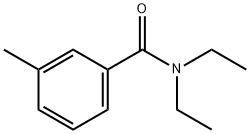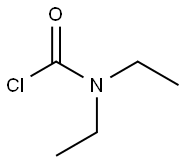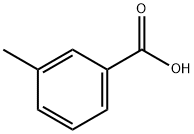N,N-Diethyl-m-toluamide
- CAS No.
- 134-62-3
- Chemical Name:
- N,N-Diethyl-m-toluamide
- Synonyms
- DEET;DET;DIETHYLTOLUAMIDE;N,N-DIETHYL-3-METHYLBENZAMIDE;muscol;Detamide;DEET (N,N-DIETHYL-M-TOLUAMIDE);mgk;Off;m-DETA
- CBNumber:
- CB8853064
- Molecular Formula:
- C12H17NO
- Molecular Weight:
- 191.27
- MDL Number:
- MFCD00009046
- MOL File:
- 134-62-3.mol
- MSDS File:
- SDS
| Melting point | -45 °C |
|---|---|
| Boiling point | 111 °C1 mm Hg |
| Density | 0.998 g/mL at 20 °C(lit.) |
| vapor density | 6.7 (vs air) |
| vapor pressure | <0.01 mm Hg ( 25 °C) |
| refractive index |
n |
| Flash point | >230 °F |
| storage temp. | room temp |
| solubility | DMSO (Slightly), Ethyl Acetate (Slightly), Methanol (Slightly) |
| pka | -1.37±0.70(Predicted) |
| form | Liquid |
| color | Clear |
| Specific Gravity | 0.996 |
| Odor | mild bland odor |
| Water Solubility | NEGLIGIBLE |
| Merck | 14,2856 |
| BRN | 2046711 |
| Stability | Stable. Combustible. Incompatible with strong oxidizing agents, strong acids, strong bases. Hydrolyzes slowly in water. |
| InChIKey | CXVBTGKUSLNJQZ-UHFFFAOYSA-N |
| CAS DataBase Reference | 134-62-3(CAS DataBase Reference) |
| EWG's Food Scores | 2-5 |
| NCI Dictionary of Cancer Terms | OFF |
| FDA UNII | FB0C1XZV4Y |
| ATC code | P03BX01 |
| NIST Chemistry Reference | Diethyltoluamide(134-62-3) |
| EPA Substance Registry System | N,N-Diethyl-m-toluamide (134-62-3) |
SAFETY
Risk and Safety Statements
| Symbol(GHS) |  GHS07 |
|||||||||
|---|---|---|---|---|---|---|---|---|---|---|
| Signal word | Warning | |||||||||
| Hazard statements | H302-H315-H319-H412 | |||||||||
| Precautionary statements | P264-P270-P273-P301+P312-P302+P352-P305+P351+P338 | |||||||||
| Hazard Codes | Xn | |||||||||
| Risk Statements | 22-36/38-52/53 | |||||||||
| Safety Statements | 61 | |||||||||
| RIDADR | 2810 | |||||||||
| WGK Germany | 2 | |||||||||
| RTECS | XS3675000 | |||||||||
| TSCA | Yes | |||||||||
| HazardClass | 6.1(b) | |||||||||
| PackingGroup | III | |||||||||
| HS Code | 29242995 | |||||||||
| Toxicity | LD50 orally in male rats (ml/kg): 2.43; in female rats: 1.78; dermally in rabbits: 3.18; LC50 by inhalation in rats (mg/l): 5.95 (U.S. EPA) | |||||||||
| NFPA 704 |
|
N,N-Diethyl-m-toluamide price More Price(30)
| Manufacturer | Product number | Product description | CAS number | Packaging | Price | Updated | Buy |
|---|---|---|---|---|---|---|---|
| Sigma-Aldrich | PHR3304 | Diethyltoluamide certified reference material, pharmaceutical secondary standard | 134-62-3 | 3G | $173 | 2024-03-01 | Buy |
| Sigma-Aldrich | 36542 | DEET PESTANAL , analytical standard | 134-62-3 | 250mg | $41.8 | 2024-03-01 | Buy |
| Sigma-Aldrich | 1197007 | Diethyltoluamide United States Pharmacopeia (USP) Reference Standard | 134-62-3 | 3g | $436 | 2024-03-01 | Buy |
| TCI Chemical | D0097 | N,N-Diethyl-m-toluamide >98.0%(GC) | 134-62-3 | 25mL | $17 | 2024-03-01 | Buy |
| TCI Chemical | D0097 | N,N-Diethyl-m-toluamide >98.0%(GC) | 134-62-3 | 500mL | $62 | 2024-03-01 | Buy |
N,N-Diethyl-m-toluamide Chemical Properties,Uses,Production
Outline
N,N-Diethyl-3-methylbenzamide, with the chemical name diethyl toluamide, is a broad-spectrum insect repellent, having repellent effect upon a variety of biting insects in various environments , can be used to drive thorn flies, midges, black flies, chiggers, deer flies, fleas, gnats, horse flies, mosquitoes, sand flies, gnats, flies and stable flat lice. N,N-Diethyl-3-methylbenzamide is a development by the US Department of Agriculture during the World War II and has the patent, the product is designated as a repellent products for the use in the US Army in 1946. In 1957 the United States Environmental Protection Agency started civil application as an insect repellent registration, initially as a pesticide on the farm, and later the United States Government applied for its use in times of war, especially war in Vietnam and Southeast Asia, the United States Environmental Protection Agency statistics, every year nearly 40 percent of Americans use N,N-Diethyl-3-methylbenzamide-containing insect repellent, there are about 200 million people worldwide usage for over 40 years by more than 20,000 units of the research studies prove that N,N-Diethyl-3-methylbenzamide is the most secure and effective broad-spectrum repellent. World Health Organization has recommended the use of repellent products containing N,N-Diethyl-3-methylbenzamide to protect against insect vectors. Often mixed with other pesticides, but when it is mixed with an amino acid salts, pesticides toxicity will increase.
US Morflex one-step synthesis
US Morflex founded in 1927, located in Greensboro, United States, is the world's largest manufacturer of N,N-Diethyl-3-methylbenzamide . It owns 40 years of production and sales of N,N-Diethyl-3-methylbenzamide history, providing 60 percent of global consumption. Users include Johnson, Bayer and other famous enterprises, Morflex repellent cream formulation has cosmetic properties, non-irritating to human skin, more even applied than alcohol formula , more comfortable, no dry and tight and not greasy sense after the use of alcohol formula, specially formulated to lock N,N-Diethyl-3-methylbenzamide in sweat, friction, etc., can maintain long-lasting efficacy. Its production methods can be called "one step synthesis" , the advantage of "one step synthesis" is that it does not produce chemical synthesis additions-phosphoric acid, hydrochloric acid, amine hydrochloride or benzene. Phosphoric acid can cause greasy products, and other impurities are either irritating to the skin, or harmful to the human body. The multi-step synthesis methods currently used in the country can not avoid these harmful chemicals addenda.
The above information is edited by the Chemicalbook of Tian Ye.
Insect repellent effects of various products
The product containing chemical drug N,N-Diethyl-3-methylbenzamide owns best effects. Preferably, the time it can provide protection is proportional to the concentration of N,N-Diethyl-3-methylbenzamide products. For using products with N,N-Diethyl-3-methylbenzamide concentration at 23.8%, 20%, 6.6% and 4.8% , the protection times of the participants for the first time the average time being bitten are 302 minutes, 234 minutes, 112 minutes, 88 minutes, respectively .
The average time of plant protection products as follows: 2% soybean oil products for 95 minutes; citronella oil product containing different concentrations of 3 to 20 minutes; the average protection time containing eucalyptus oil repellent latest listing of 120 minute.
Many consumers believe that there is repellent function of the "Skin Bath Oil", provide protection only 10 minutes.
Products contains a chemical component (Merck insecticide product IR3535) , the average protection time is only 23 minutes.
Pregnant women should us N,N-Diethyl-3-methylbenzamide insect repellents with caution
N,N-Diethyl-3-methylbenzamide has potential risks to humans, especially pregnant women: after contacted with the skin, N,N-Diethyl-3-methylbenzamide-containing insect repellent products will penetrate into the blood, it is possible through the blood into the placenta, even umbilical cord, which may result in teratogenic. Pregnant women should avoid using N,N-Diethyl-3-methylbenzamide containing insect repellent products, pregnant women can choose to wear light-colored long-sleeved shirt and trousers, or using products containing natural ingredients repellent to prevent mosquito bites. If necessary, using insect repellent containing N,N-Diethyl-3-methylbenzamide products should also be with the lowest concentration and effective insect repellent components as possible.
Chemical Properties
Pale yellow liquid. There are light citrus fragrance smell.
Uses
1. As major components for a variety of solid, liquid mosquito repellent series.
2. Insect repellent, having unique effects for mosquito controlling . Formulation: 70%, 95% liquid.
production method
By the Inter-toluene chloride and diethyl amine reaction. Industrial products containing 5%-15% isomer.
Description
DEET was first developed and patented by the US Army in 1946. It was approved for general public use by the US Environmental Protection Agency (EPA) in 1957 and was reregistered in 1998. It has been estimated that more than 1.8 million kg (~4 million pounds) of DEET are used in the United States every year in more than 225 registered products. DEET is often sold and used in lotions or sprays with concentrations up to 100%. However, the Center for Disease Control recommends only 30–50% DEET to reduce the incidence of vector-borne disease transmission. Registered products must contain at least 95% of the meta-isomer, but small amounts of the more toxic ortho-isomer and the less toxic para-isomer are permitted.
Chemical Properties
Colorless to Amberlike Liquid
History
Formulations registered for direct human application contain from 4% to 100% DEET. DEET was developed as a joint effort by the Department of Defense and U.S. Department of Agriculture (USDA). After examining hundreds of compounds for their repellent capabilities in the 1940s, DEET was selected and patented by the U.S. Army in 1946.the USDA did not announce DEET’s discovery until 1954, and it was registered for public use in 1957. DEET is prepared from m-toluoyl chloride and diethylamine in benzene or ether.
Uses
DEET is used as an insect repellent.
Uses
DEET is an Insect repellent.This compound is a contaminant of emerging concern (CECs).
Indications
DEET is an organic liquid that is an excellent mosquito repellent; stronger
preparations of DEET are also effective against stable flies, although little protection
is provided against ticks. Commercial preparations are available in aerosol,
cream, or lotion form and vary in concentration from 6% to 100%. Because
DEET is absorbed into the bloodstream, it should be applied sparingly. Lesser
concentrations of DEET should be used whenever possible, with additional applications
to the skin if needed. Reports of a toxic encephalopathy and brief
seizures have been documented in children after overzealous use. Less serious
neurologic side effects include confusion, irritability, and insomnia. Contact dermatitis
has been observed with preparations containing higher concentrations of
DEET.
Use preparations with <20% DEET in children. Avoid mucous membranes,
broken skin, and hands of children, because they are often in contact with the
mouth. Spray clothing instead of skin whenever possible, but avoid contact
with rayon, acetate, or spandex, because these materials may be damaged by
DEET.
Definition
ChEBI: A monocarboxylic acid amide resulting from the formal condensation of the carboxy group of m-toluic acid with the nitrogen of diethylamine. It is the most widely used insect repellent worldwide.
General Description
Clear colorless or faintly yellow slightly viscous liquid. Faint pleasant odor.
Air & Water Reactions
N,N-Diethyl-3-methylbenzamide is sensitive to prolonged exposure to moisture. Insoluble in water.
Reactivity Profile
N,N-Diethyl-3-methylbenzamide is incompatible with strong acids, strong bases and strong oxidizing agents. N,N-Diethyl-3-methylbenzamide hydrolyzes slowly in the presence of water. N,N-Diethyl-3-methylbenzamide has a solvent effect on most plastics, paints, and varnishes. N,N-Diethyl-3-methylbenzamide is also incompatible with rayon, acetate or dynel clothing.
Fire Hazard
N,N-Diethyl-3-methylbenzamide is combustible.
Safety Profile
Poison by intravenous route. Moderately toxic by ingestion and skin contact. Human systemic effects: coma, convulsions, dermatitis, mydriasis @upillary ddation), nausea or vomiting, stiffness. An eye and skin irritant. Experimental reproductive effects by skin contact. Mutation data reported. Can cause central nervous system disturbances. A pesticide. DEET is the active ingredient in most commercial insect repellents. When heated to decomposition it emits toxic fumes of NOx
Environmental Fate
Historically, it was thought that DEET worked via blocking of
insect olfactory receptors and that DEET masked the target to
the insect senses so the insect would not detect a food source.
Instead, however, recent evidence indicates that the odor of
DEET is what acts as the true repellent. A specific type of an
olfactory receptor neuron in the antennal sensilla of mosquitoes
was identified, and this neuron is activated by DEET. This
activity is responsible for the properties that give DEET its
repellent ability.
DEET is also toxic to the central nervous system(CNS). DEET
acts as an inhibitor to the enzyme acetylcholinesterase which is
required for the proper functioning of the human nervous
system, other vertebrates, and insects. The enzyme acetylcholinesterase
hydrolyzes acetylcholine, which is important to
muscle control. When this process is inhibited, acetylcholine
builds up in the synaptic cleft and causes neuromuscular paralysis
and death by asphyxiation.
Toxicity evaluation
Little information is available on the environmental fate of DEET. DEET is stable to hydrolysis at environmental pH levels. The initial belief was that DEET was not likely to enter aquatic ecosystems because it was first registered for indoor use. It has been shown in several studies, however, that DEET is found in many waterways in the United States and around the world,such as groundwater, open water, sewage (influent and effluent), surface water, and septic waste in concentrations ranging from 30 ng l-1 to 13 μg l-1. A major source of introduction to aquatic environments is via sewage following washing and excretion by humans. The potential for DEET to be transported through soil is unknown. Although, some studies have shown that purification of water containing low concentrations of DEET using a combination of sand filtration, activated sludge treatment, and ozonation has a removal efficiency less than 69% (ozonation being the most efficient step). Sand filtration alone was inefficient, notably due to DEET’s hydrophilic nature (Kow < 3). This evidence suggests that DEET may not be retained in soil and other organic matter, but travels with groundwater into larger bodies of water, and more extreme measures than this must be taken to remove DEET from natural and domestic waters. On the other hand, one study noted that DEET ‘has an estimated Koc value of 536, indicating potential for sorption to suspended solids and sediment.’
N,N-Diethyl-m-toluamide Preparation Products And Raw materials
| Supplier | Tel | Country | ProdList | Advantage | |
|---|---|---|---|---|---|
| BLiT (Hefei)Chemical Co.,Ltd | +86-551-62622640 | sales@blitchem.com | China | 291 | 58 |
| COSMAN CHEMICAL CO., LTD. | +8613761622051 | sales@cosmanchem.com | China | 14 | 58 |
| Shandong Zhishang New Material Co., Ltd. | +8617653113209 | sales002@sdzschem.com | China | 3050 | 58 |
| Hebei Guanlang Biotechnology Co,.LTD | +8619930503252 | daisy@crovellbio.com | China | 5964 | 58 |
| Dalian Richfortune Chemicals Co., Ltd | 0411-84820922 8613904096939 | sales@richfortunechem.com | China | 303 | 57 |
| Suzhou Sanyi Polymer Chemical Technology Co., Ltd. | +8615571922873 | 15571922873@163.com | China | 106 | 58 |
| Hebei Jingbo New Material Technology Co., Ltd | +8619931165850 | hbjbtech@163.com | China | 1000 | 58 |
| Shaanxi Franta Biotechnology Co., Ltd | +86-13082019107 +86-13082019107 | admin@flanderff.com | China | 229 | 58 |
| Hebei Kangcang new material Technology Co., LTD | +8619133911216 | fanfan@kangcang.com.cn | China | 340 | 58 |
| CONTIDE BIOTECH CO.,LTD | +85253358525 | xena@healthtide-api.com | China | 499 | 58 |
Related articles
- Toxicity of DEET
- DEET was first developed and patented by the US Army in 1946. It was approved for general public use by the US Environmental P....
- Jan 14,2022
View Lastest Price from N,N-Diethyl-m-toluamide manufacturers
| Image | Update time | Product | Price | Min. Order | Purity | Supply Ability | Manufacturer | |
|---|---|---|---|---|---|---|---|---|
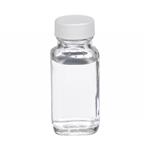 |
2024-04-25 | N,N-Diethyl-m-toluamide
134-62-3
|
US $0.00 / KG | 1KG | 99% | 1000 | BLiT (Hefei)Chemical Co.,Ltd | |
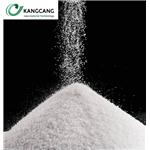 |
2024-04-25 | N,N-Diethyl-3-methylbenzamide
134-62-3
|
US $9.00-80.00 / g | 10g | min99% | 10 tons | Hebei Kangcang new material Technology Co., LTD | |
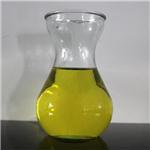 |
2024-04-25 | N,N-Diethyl-3-methylbenzamide
134-62-3
|
US $0.00 / G | 1G | 99% | 20 | CONTIDE BIOTECH CO.,LTD |
-

- N,N-Diethyl-m-toluamide
134-62-3
- US $0.00 / KG
- 99%
- BLiT (Hefei)Chemical Co.,Ltd
-

- N,N-Diethyl-3-methylbenzamide
134-62-3
- US $9.00-80.00 / g
- min99%
- Hebei Kangcang new material Technology Co., LTD
-

- N,N-Diethyl-3-methylbenzamide
134-62-3
- US $0.00 / G
- 99%
- CONTIDE BIOTECH CO.,LTD





